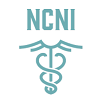Simply put, dystonia is when your muscles start moving of their own accord in abnormal ways. They may contract involuntarily, causing twitches, spasms, tremors, and strange body postures. While the pain index varies, dystonia is often debilitating and can have serious effects on a person’s self-esteem.
In certain people, dystonia is a region-specific problem, occurring only when they’re carrying out certain tasks, such as writing or typing. In others, the problem isn’t so localized and can affect the entire body.
250,000 people in the United States alone have dystonia, according to the American Association of Neurological Surgeons. This blog will look at the fundamentals and at the finer details of the health complication.
Symptoms
Depending on the progression of the condition, the symptoms could be mild or severe. Among the earliest symptoms of the condition you will find:
-Foot cramps
-Dragging leg
-Uncontrollable, involuntary blinking of the eyelids
-Impaired speech
-Involuntary neck pulls
-Fatigue
-Stress

The symptoms appear in the upper body.
Causes
While the causes may vary, the problem occurs in the basal ganglia—the part of the brain that controls brain contractions. Issues in nerve cell communication with the muscles in the body usually branch out to bigger physiological complications.
Damage to the basal ganglia could be a result of:
– Trauma
– Tumor
– Stroke
– Infection
– Lead poisoning
– Oxygen deprivation
– Reaction to certain drugs or medication
Is There Only One Kind of Dystonia?
Dystonia affects different parts of the body in different people, based on which it is also classified. The categories are as follows:
Focal Dystonia: That affects only a specific region
Generalized Dystonia: Affects the whole body
Multifocal Dystonia: Affects multiple body parts that are not related
Segmental Dystonia: Affects adjacent body parts
Hemidystonia: Affects legs and arms that are on the same side
Blepharospasm: Dystonia of the eyes, causing the eyelids to twitch uncontrollably
Cervical Dystonia: The commonest of all dystonia types, it affects the neck and the back mostly in middle-aged people
Oromandibular Dystonia: Affects the mouth and the jaw, causing speech impediments.
Spasmodic Dystonia: Affects the vocal cords.
Treatment Options
Since dystonia is a disease that emanates from the basal ganglia in the brain, the treatment is also received usually from neurologists. Usually, your options include medication and therapy.
However, in the case that the symptoms are far more developed and if you’re looking for long-term relief, Botox injections are one of the most commonly used methods. Botulinum Toxin injections help numb or relax the problematic muscles, thereby providing much-needed relief.
If you’re looking for a treatment for dystonia in Los Angeles or Huntington Beach, Dr. Farzin Pedouim is a leading neurologist and movement disorders specialist who can help. Reach out to him at (949) 239-4410.





